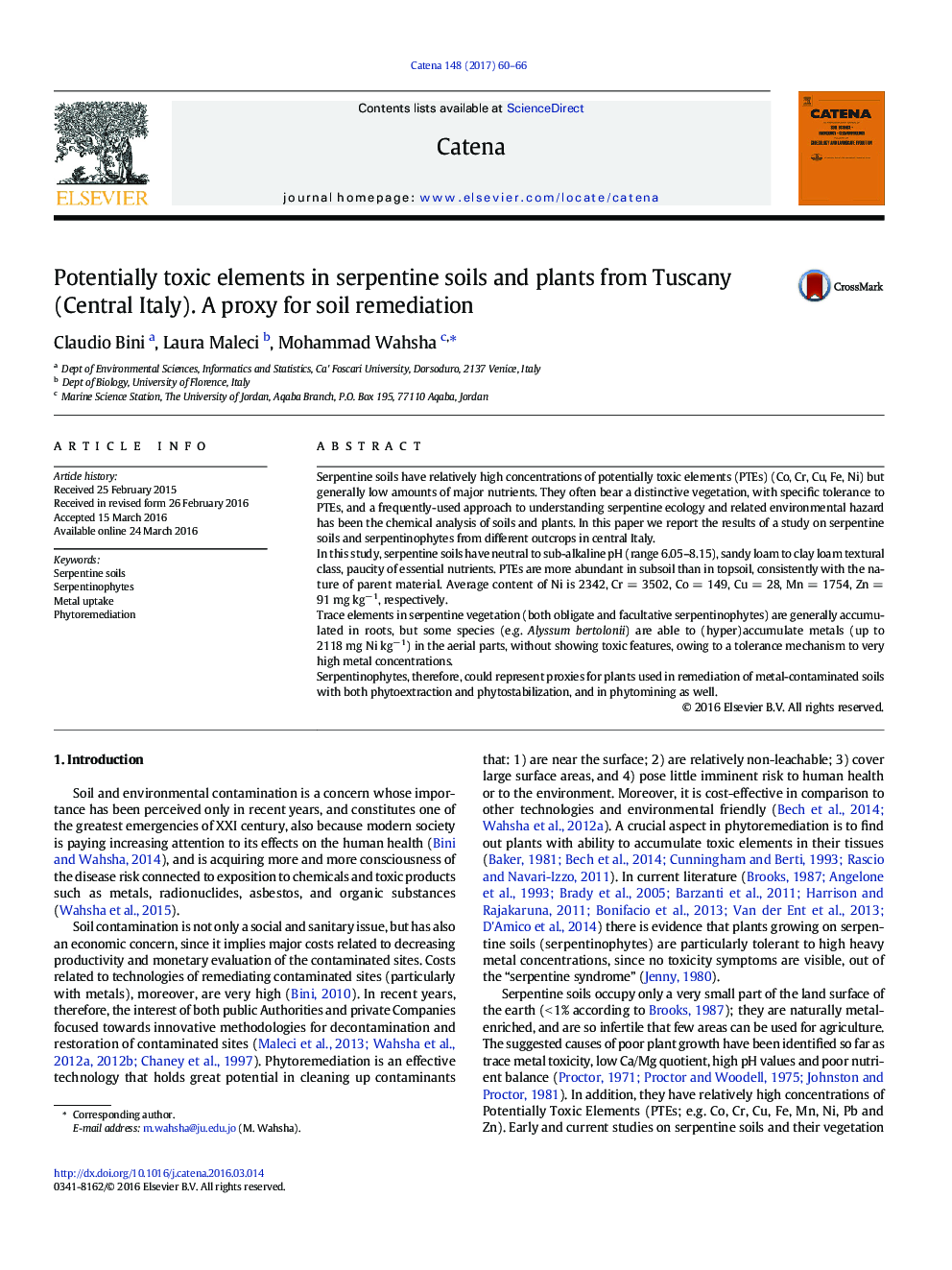| کد مقاله | کد نشریه | سال انتشار | مقاله انگلیسی | نسخه تمام متن |
|---|---|---|---|---|
| 4570814 | 1332076 | 2017 | 7 صفحه PDF | دانلود رایگان |
• Soils (Entisols–Inceptisols) have limited evolution, coarse texture, paucity of nutrients.
• High concentrations of Mg and trace elements (Co, Cr, Cu, Mn, Ni and Zn)
• Metal availability very low; EDTA-extractable concentrations decrease with depth.
• Participation to short-term biological cycles
Serpentine soils have relatively high concentrations of potentially toxic elements (PTEs) (Co, Cr, Cu, Fe, Ni) but generally low amounts of major nutrients. They often bear a distinctive vegetation, with specific tolerance to PTEs, and a frequently-used approach to understanding serpentine ecology and related environmental hazard has been the chemical analysis of soils and plants. In this paper we report the results of a study on serpentine soils and serpentinophytes from different outcrops in central Italy.In this study, serpentine soils have neutral to sub-alkaline pH (range 6.05–8.15), sandy loam to clay loam textural class, paucity of essential nutrients. PTEs are more abundant in subsoil than in topsoil, consistently with the nature of parent material. Average content of Ni is 2342, Cr = 3502, Co = 149, Cu = 28, Mn = 1754, Zn = 91 mg kg− 1, respectively.Trace elements in serpentine vegetation (both obligate and facultative serpentinophytes) are generally accumulated in roots, but some species (e.g. Alyssum bertolonii) are able to (hyper)accumulate metals (up to 2118 mg Ni kg− 1) in the aerial parts, without showing toxic features, owing to a tolerance mechanism to very high metal concentrations.Serpentinophytes, therefore, could represent proxies for plants used in remediation of metal-contaminated soils with both phytoextraction and phytostabilization, and in phytomining as well.
Journal: CATENA - Volume 148, Part 1, January 2017, Pages 60–66
